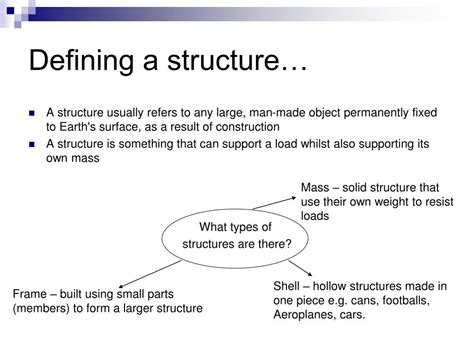How do elite men optimize workout splits for peak strength & muscle hypertrophy?

Unlocking Elite Performance: The Science Behind Optimized Splits
For elite men striving for peak strength and maximal muscle hypertrophy, a workout split isn’t just a schedule – it’s a meticulously crafted strategy. Unlike the novice, the advanced lifter operates at the edge of their physiological capacity, demanding a sophisticated understanding of training variables to continue progressing. Optimization means more than simply lifting heavy; it involves precise manipulation of frequency, volume, intensity, and recovery tailored to individual needs and goals.

Core Pillars of Elite Training Optimization
Before diving into specific splits, it’s crucial to understand the foundational principles that elite athletes master:
- Progressive Overload: The consistent increase in training demand (weight, reps, sets, frequency, reduced rest) is non-negotiable for continued adaptation.
- Volume & Frequency: Finding the sweet spot for total work per muscle group and how often it’s trained is key for stimulating growth and strength without overtraining.
- Intensity: Refers to the load lifted relative to one’s maximum, critical for strength development and muscle fiber recruitment.
- Specificity: Training adaptations are specific to the demands placed on the body. Strength requires heavy lifting; hypertrophy requires sufficient mechanical tension, metabolic stress, and muscle damage.
- Recovery: Often overlooked, but paramount. This includes adequate sleep, nutrition, and strategic deloads.
Popular Workout Splits for Advanced Athletes
Elite lifters often cycle through or adapt these proven split structures:
Upper/Lower Split
This split typically involves 4 days a week (e.g., Upper, Lower, Rest, Upper, Lower, Rest, Rest). It offers high frequency for each muscle group (twice a week) while allowing ample recovery between sessions. It’s excellent for balancing strength and hypertrophy, as each session can be structured with varied rep ranges and exercises.
Push/Pull/Legs (PPL) Split
A highly popular split, often run 6 days a week (Push, Pull, Legs, Push, Pull, Legs, Rest). PPL allows for very high volume per muscle group per session, as muscles are grouped by their function. This provides significant metabolic stress and mechanical tension, making it ideal for hypertrophy, while still allowing for good frequency if run twice a week per muscle group.
Body Part Split (Bro Split)
While often associated with intermediate lifters, elite bodybuilders frequently utilize highly refined body part splits (e.g., Chest/Triceps, Back/Biceps, Shoulders, Legs, Arms). The advantage here is the ability to dedicate extreme volume to a single muscle group, exhausting it from multiple angles. However, the frequency per muscle group is lower (once a week), requiring careful programming to ensure sufficient stimulus.

Optimizing for Strength vs. Hypertrophy
While intertwined, peak strength and hypertrophy often require slight shifts in emphasis within a split:
- For Peak Strength: Prioritize compound movements (squats, deadlifts, bench press, overhead press) with higher intensity (80-95% 1RM), lower rep ranges (1-5), and longer rest periods (3-5 minutes). The split must allow for adequate recovery of the central nervous system.
- For Muscle Hypertrophy: Focus on a blend of compound and isolation exercises across moderate intensity (60-80% 1RM), moderate-to-high rep ranges (6-15), and shorter rest periods (60-120 seconds). Total volume per muscle group per week becomes a critical driver.
Elite athletes often employ undulating or block periodization to cycle through phases emphasizing one goal over the other, or a blend of both, preventing plateaus and ensuring continuous progress.

The Crucial Role of Periodization and Recovery
Beyond the split itself, elite optimization hinges on:
- Periodization: Systematically varying training variables (volume, intensity, exercise selection) over time. This includes macrocycles (yearly plans), mesocycles (blocks of 4-12 weeks), and microcycles (weekly plans). Linear, undulating, and block periodization are common approaches used to peak for competitions or break through plateaus.
- Deload Weeks: Regularly scheduled periods of reduced volume and/or intensity, crucial for allowing the body to recover, supercompensate, and prevent overtraining syndrome.
- Nutrition: A hyper-caloric diet rich in protein, adequate carbohydrates, and healthy fats is essential for muscle repair and growth. Precision timing of nutrients around workouts also plays a role.
- Sleep: 7-9 hours of quality sleep per night is non-negotiable for hormonal balance, muscle repair, and cognitive function.
- Stress Management: Chronic stress elevates cortisol, hindering recovery and muscle growth. Elite lifters understand the importance of managing all forms of stress.

Sample Elite Training Week Considerations
An elite athlete might not stick to one split indefinitely. They might:
- Utilize an Upper/Lower split during an off-season for balanced growth and higher frequency.
- Transition to a PPL or even a specialized body part split when focusing on bringing up lagging muscle groups or during a high-volume hypertrophy block.
- Implement specific strength blocks with a 3-4 day full-body or powerlifting-style split (e.g., squat/bench/deadlift focused) leading into a strength competition.
- Incorporate active recovery days, mobility work, and stretching as integral parts of their weekly routine.

Conclusion: The Art and Science of Individualization
For elite men, optimizing workout splits is an intricate dance between scientific principles and individual response. There’s no single ‘best’ split; rather, it’s about understanding the interplay of training variables, listening to one’s body, consistently implementing progressive overload, and prioritizing holistic recovery. The truly elite continuously evaluate, adapt, and refine their approach, transforming their workout split from a mere schedule into a dynamic blueprint for perpetual strength and muscle hypertrophy.








